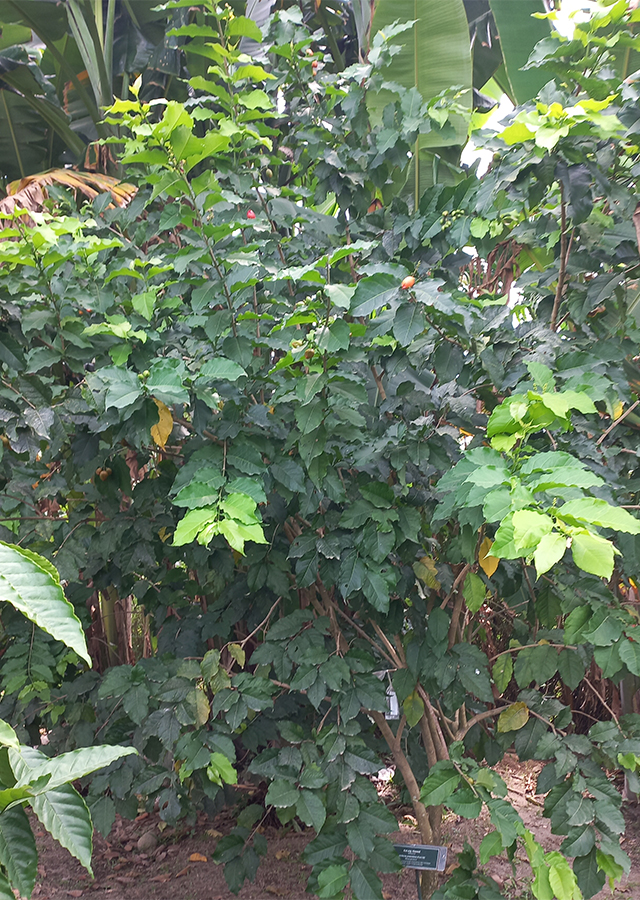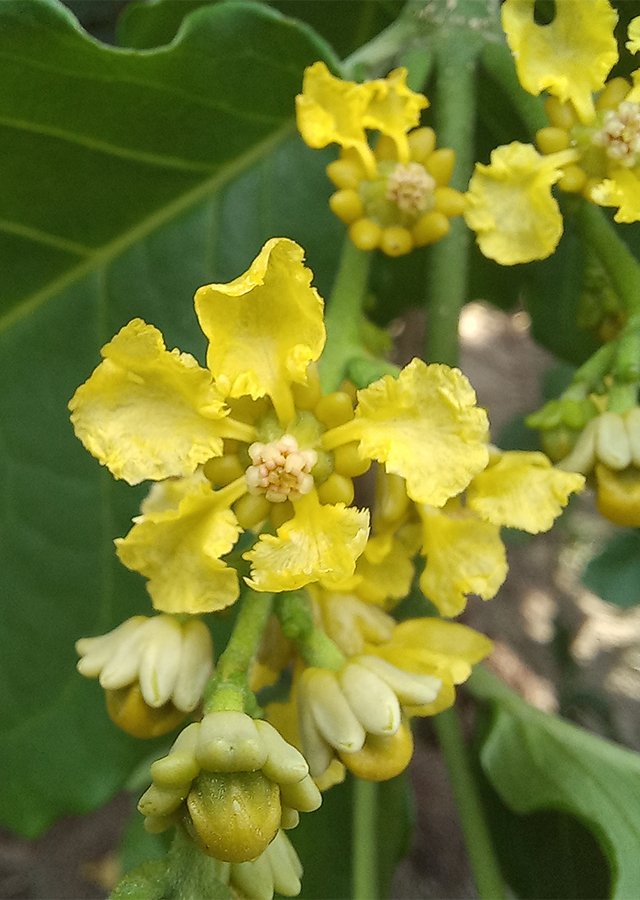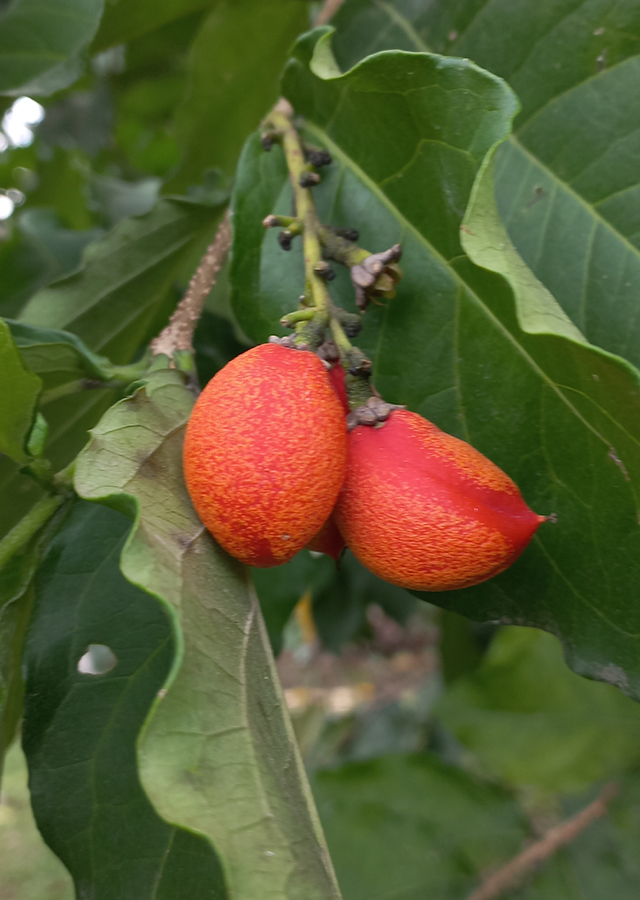Peanut Butter Fruit
Bunchosia armeniaca (Cav) DC
Malpighiaceae
Location in our garden
Orchard



Synonym
Bunchosia armeniaca f. parvifolia Nied.
Bunchosia armeniaca f. systyla Nied.
Malpighia armeniaca Cav.
Habitus
Shrubs. An evergreen perennial shrub or small tree growing up to 10 m tall.
Part Used
Leaves
Fruit
Growing Requirements
Full Sunshine
Low Temperature
Habitat
Terrestrial
Overview
Bunchosia armeniaca is native to Bolivia, Brazil North, Brazil South-East, Colombia, Ecuador, Peru, and Venezuela. It is mainly cultivated as a fruit tree and as an ornamental tree in gardens. The fruit pulp is sweet and creamy, and has a flavour similar to that of peanut butter, hence the name. Ripe fruit is mostly eaten fresh and is also used for jellies, jams, muffins or preserves, and to flavour drinks and milkshakes. The fruit can be refrigerated and the pulp can be frozen.
Vernacular Names
Ciruela De Fraile (Spanish), Bunchoise Des Andes (French), Ameixa-Do-Peru (Brazil), Ciruela verde (Columbia), Manteiga-de-amendoim (Portuguese), Cansaboca (Peru), Ameishia (Japanese).
Agroecology
A plant of low to middle elevations in the tropics. Found at elevations from 1,500-2,400 m. It thrives in full sun in moist, fertile loamy soil rich in organic matter with pH range of 6-7.6. It tolerates partial shades and is quite cold tolerant but briefly tolerant of freeze down to -2 °C.
Morphology
- Stems - persistently sericeous, the older woody stems are glabrate. The tree has stiff, spreading branches.
- Leaves - simple, opposite, ovate or oblong, chartaceous, upto 17 cm long and 10 cm wide with undulating margin, and frequently have paired glands on the petiole or base of the blade and epipetiolar stipules.
- Flowers - mostly bisexual, actinomorphic, 12-15 mm across and borne in compact, axillary racemose inflorescences. Sepals 5, petals 5. The gynoecium consists of a single compound pistil of almost always 3 carpels, axile ovule.
- Fruits - borne in clusters, indehiscent, 2.5 cm long, ovoid, ellipsoid to obovate berry with pale green exocarp, turning orange, or red at maturity.
- Seed - 2 or 3 one-seeded pyrenes embedded in orangey-red or red-coloured pulp.
Cultivation
Propagated from seeds (generatively), and from cuttings (semi-ripe wood and greenwood). Plants can begin producing fruit in just two years from seed. The trees can flower and produce fruit for most of the year in appropriate climates - several crops of fruit are usually produced each year.
Chemical Constituents
Alkaloids, tannins, triterpenoids, steroids, glycoside, saponins, flavonoids (rutin, isoquercitrin, afzelin), and phenolic compounds.
Traditional Medicinal Uses
- Help in reducing the problems of heart as it reduces the cholesterol levels which is the main reason behind which heart ailments.
- Makes our nerves function effectively.
- In traditional medicine is used to treat different pathologies including infectious and inflammatory diseases.
- Studies showed antioxidant, antibacterial, and anti-inflammatory activities.
Part Used
Reference Sources
- ACG Publication. (2015). Antibacterial and Anti-Inflammatory activities of Bunchosia armeniaca (Cav.) DC. (Malpighiaceae). https://acgpubs.org/article/records-of-natural-products/2015/3-july-september/antibacterial-and-anti-inflammatory-activities-of-bunchosia-armeniaca-cav-dc-malpighiaceae. 25-11-2021.
- Fern, Ken. (2021). Useful Tropical Plants Database: Bunchosia armeniaca. http://tropical.theferns.info/viewtropical.php?id=Bunchosia+armeniaca. 25-11-2021.
- Kew Royal Botanical Gardens. (2021). Plants of the World Online: Bunchosia armeniaca (Cav.) DC. http://www.plantsoftheworldonline.org/taxon/urn:lsid:ipni.org:names:555884-1. 25-11-2021.
- Lim, T.K. (2012). Edible Medicinal and Non-Medicinal Plants: Volume 3: Fruits. Springer Science+Business Media B.V.
- Premathilaka, U.L.R., and Silva, G.M. (2016). BIOACTIVE COMPOUNDS AND ANTIOXIDANT ACTIVITY OF BUNCHOSIA ARMENIACA. WORLD JOURNAL OF PHARMACY AND PHARMACEUTICAL SCIENCES,Volume 5 (10): 1237-1247.

